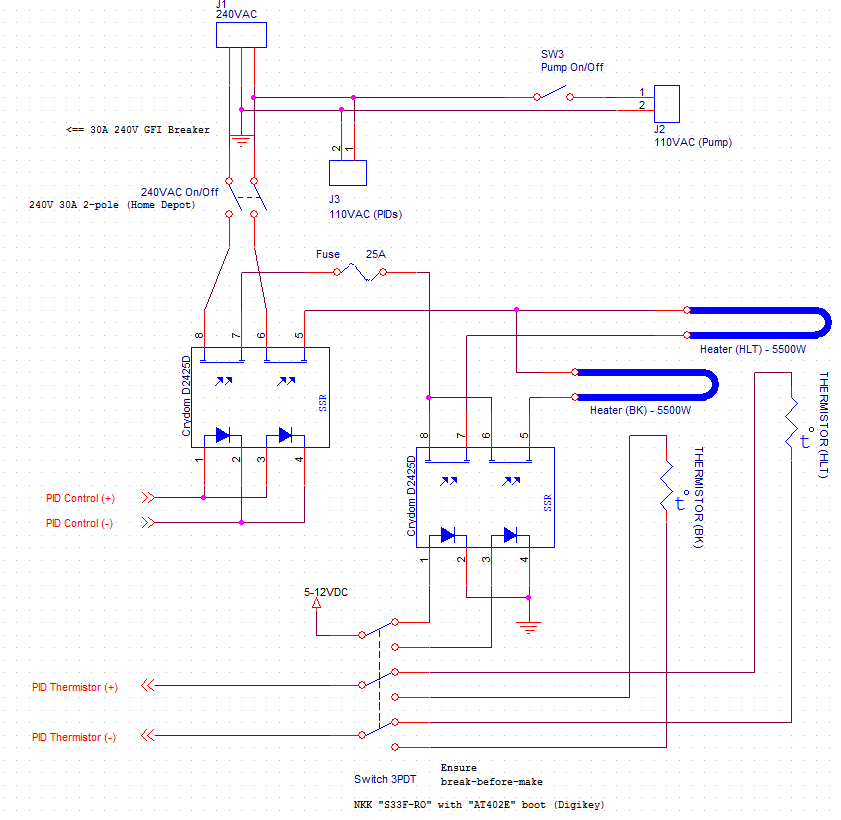WhiteArmadilloBrewing
Well-Known Member
- Joined
- Jul 28, 2017
- Messages
- 81
- Reaction score
- 5
I'm trying to finish up my control panel build and had a question on wiring up my heating elements. I have two 240v elements in the BK and Mash Tun as well as a 120v RIMS. My question is this: before I install additional switches to power these is there any reason not to just wire them directly with my PID so that they are regulated by the PID and not manually by me/my switch?
I've seen a number of builds where people hardwire their elements to plugs and run them through a receptacle as well but am unsure what the easiest/most effective solution is.
I've seen a number of builds where people hardwire their elements to plugs and run them through a receptacle as well but am unsure what the easiest/most effective solution is.







